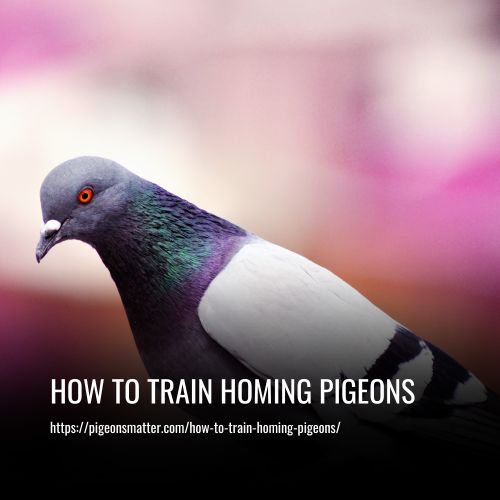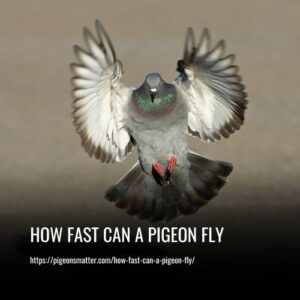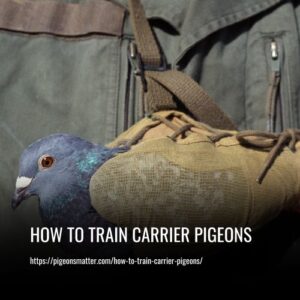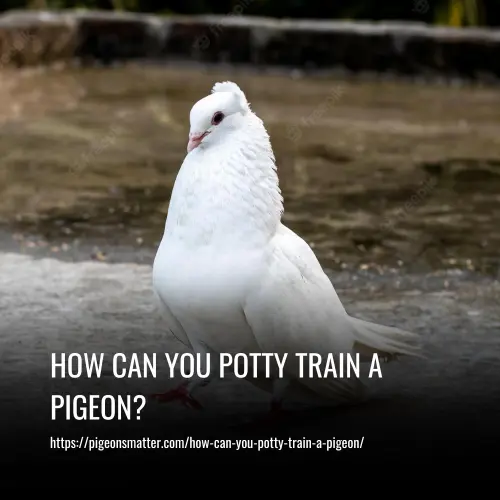Do you want to train homing pigeons? These birds are known for their ability to find their way back home from long distances, making them a popular choice for racing and messaging. But how do you train them to do this?
To Train Homing Pigeons, Follow These Steps:
- Set the Base Location
- Start Early
- Practice at Intervals
- Food and Water Incentives
- Trust the Pigeon
- Educate Your Sense of Direction

How to Train Homing Pigeons
Training a pigeon for racing can be a unique experience for each owner. While there are various methods and theories, it’s important to find what works best for you and your pigeon. Remember, each pigeon has a unique personality and will respond differently to training. Here are some general tips for successful training:
1. Set the Base Location
Homing pigeons are trained to carry messages between two locations by using a base location, also known as the home loft. The loft is a central location for the pigeons, where they spend the majority of their time eating and drinking. In order to ensure that the pigeons return to this location, the home loft must have a trap door that allows the pigeons to enter but restricts their ability to exit at will.
The home loft is the default location that the pigeons will always use as a return point, even if they are released more than 100 miles away. This unique ability of homing pigeons to navigate and return to their base location has made them invaluable messengers throughout history.
2. Start Early
Training pigeons at a young age is preferred by most breeders. The ideal age to start training is between 25-30 days. It’s important to keep the young pigeons in their own loft with birds of similar ages to prevent them from being overwhelmed by adult pigeons. During this stage, it is essential to ensure that the pigeon flies through the loft daily, which is commonly referred to as baling.
It’s also recommended to talk to and whistle at the pigeon when feeding them to help them get familiar with their owner’s voice and call. This way, they will become accustomed to their owner and their training routine.
3. Practice at Intervals
Training your pigeons to fly long distances requires careful acclimation and gradual increases in range. Start by practicing at variable distances, using a cage to carry the pigeons a mile away from home. Release them and let them fly back home. Repeat this process several times a week to build their confidence and endurance.
Increase the range to 5 miles and repeat the process. Attempt a 10-mile flight the following week. Keep increasing the range until you reach a distance of over 50 miles. Systematically expanding the distance will assess individual birds’ abilities while enhancing the group’s stamina and self-assurance. Training your pigeons to fly long distances takes time and patience, but with consistent practice, it can be done with ease.
4. Food and Water Incentives
Homing pigeons are trained to navigate to specific locations through the use of food and water rewards. To create a two-way flight route, remove the food from the home base and take the pigeon to the second location to provide feed. The pigeon will eventually learn to migrate between the two locations independently.
To deliver a message, remove the feed from the home base and release the hungry pigeon. It will fly to the second location to feed and deliver your message. This process requires patience and consistency in training the pigeon. With proper training, homing pigeons can be reliable messengers for short to medium distances.
5. Trust the Pigeon
A young pigeon can start exploring short distances after settling in its new loft for a few days. Its wings will have strengthened, allowing it to walk a few meters on its own. This is a crucial time for the pigeon, and it’s important to trust that it will return home.
One tip is to let the pigeon out before feeding it, so it will have an appetite and return to its feeder on the first call. Trusting your pet and providing a safe environment will help it thrive and enjoy its new home.
6. Educate Your Sense of Direction
Training young pigeons to have a good sense of orientation is essential for their development. While these birds are naturally well-oriented, it’s still necessary to help them along the way. To start, it’s important to accustom them to cages or training baskets. These small spaces will help them learn to return to their loft on their own. However, it’s crucial to take things slowly and introduce them gradually to avoid stressing out the young pigeons.
Once they’re comfortable in the training baskets, it’s time to start the training process. This involves moving them to a nearby location and releasing them to fly back home. However, it’s important to choose sunny days without rain, strong winds, or fog to make the test easier for the young pigeons.
By working on their sense of orientation, you’ll be helping your young pigeon develop into a healthy and happy adult.
How Do Homing Pigeons Work Out Where To Go?
The question of how birds navigate long distances has puzzled scientists for a long time, and it remains an open question. However, there are some theories being tested by ornithologists and researchers. According to a theory, birds rely on solar and magnetic cues to maintain their navigation. Recent developments reported on phys.org suggest that there may be more to this story.
A theory has been proposed by scientists from Switzerland and South Africa which suggests that certain bird species may navigate using an internal gyroscope and the earth’s magnetic field. This theory is still being tested, but it offers a new perspective on how birds are able to find their way over long distances.
What Do I Need To Train Homing Pigeons?
Training pigeons requires proper preparation and equipment. Here are the steps you need to take:
Building a pigeon loft can be a fun and rewarding experience for pigeon enthusiasts. When constructing your loft, it’s important to consider the size and space needed for your pigeons. For each pair of pigeons housed in a loft, approximately 10 cubic feet of space is needed.
If you plan on keeping multiple pairs, make sure to plan for the appropriate amount of space. Location is also an important factor to consider when building your loft. Make sure it’s in an area that is free from obstructions like wires, trees, and lampposts as these can negatively impact your ability to train your birds.
Additionally, the loft should be designed to keep the birds safe from predators. If you plan on breeding your pigeons, separate quarters will be required for the parent and offspring. Your loft should also contain a trap door for releasing your pigeons.
Whether you choose to build your own loft or purchase one, it’s important to carefully consider the needs of your pigeons and provide them with a safe and comfortable environment.
Minimum Age for Training Homing Pigeons
Training homing pigeons requires a dedicated schedule and consistent effort. In order to begin training homing pigeons, it is recommended that they are at least 6 weeks old. At this age, you can introduce them to the trapdoor in the loft which allows them to enter and exit as needed.
Creating a training schedule can help keep the process consistent and ensure progress is made. The schedule should include training at least once a day. It’s important to note that training homing pigeons takes time and dedication. By following a schedule and remaining consistent, you can help your pigeons become skilled and reliable flyers.
FAQs
The time required to train homing pigeons varies depending on several factors but typically takes around 8 weeks.
Training homing pigeons is a feasible task, but it requires a significant investment in time, effort, and proper care.
Homing pigeons require breaks to rest and replenish their energy before continuing their journey back home.
Research has shown that some animals, such as certain primates, have the ability to recognize individual human faces and are not affected by changes in clothing.
Homing pigeons have the ability to fly long distances without the need for food or rest.
Homing pigeons share similarities with other pigeons and have a dietary preference for items such as rice, maize, split peas, barley, wheat, and various seeds.
The homing pigeon, a domesticated breed derived from the wild rock dove, has been selectively bred for its remarkable ability to navigate over great distances and find its way home. Not all pigeons possess this trait and can be trained as carriers.
It is common for pigeons to not sleep in their nests and seek out alternative locations for rest and overnight stays. They search for shelters that provide warmth and protection from predators, often settling on roofs of buildings and homes.
It is recommended to begin training homing pigeons at the age of 6 weeks, during which time they can also learn to navigate the trapdoor in the loft.
Pigeons have been observed to pass the mirror test, recognize letters of the human alphabet, differentiate between photographs, and distinguish different humans within a photograph, indicating a level of complexity and intelligence.
Conclusion
Training homing pigeons can be a rewarding and fulfilling experience for both you and your feathered friends. With patience, consistency, and a little bit of know-how, you can teach your pigeons to navigate the skies and return home safely. So why not give it a try? Who knows – you may just discover a lifelong hobby that brings you joy and wonder. Happy flying!


